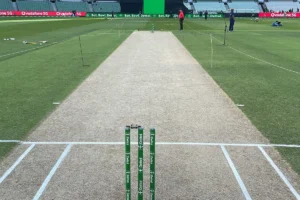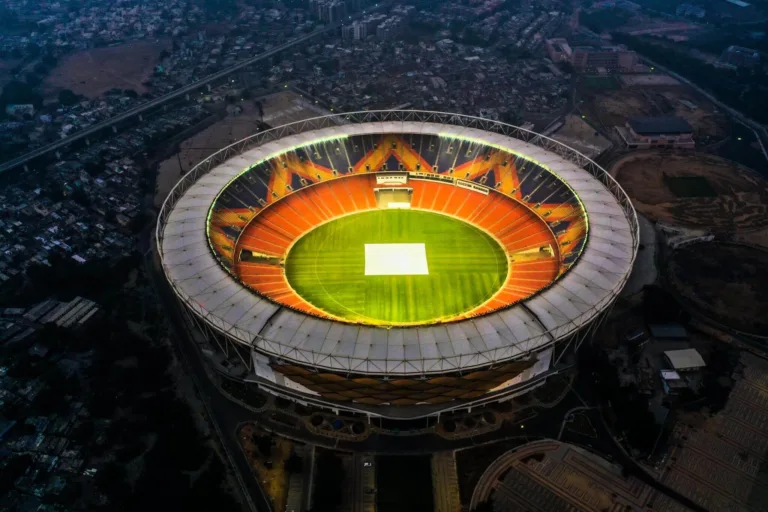Cricket is a game that needs skill and accuracy. It also needs a good pitch for players to show their talent. Have you ever wondered how cricket pitch is made? Do you want to know how a cricket pitch is made? In this guide, we will explain the steps, using knowledge and experience, to show you how to make a great cricket pitch.
Ground Preparation
The first step is to prepare the ground well. This is very important because it makes the playing surface smooth and even. It also helps players to play without any problems.
Soil Analysis and Selection
The next step is to check the soil carefully. Before putting any grass on the ground, experts test the soil. They look at things like how acidic or basic the soil is, how well water drains from it, and what it is made of. These things affect how long and how well the cricket pitch lasts.
Pitch Measurements
After choosing the soil, the next step is to measure and draw the size of the cricket pitch. The pitch should be 22 yards (20.12 meters) long and 10 feet (3.05 meters) wide. To measure correctly, ground staff use tapes and other tools. They draw the lines for the crease, the popping crease, and the return crease on both sides of the pitch.
Leveling Ground
The fourth step is to make the ground level. This means making sure there are no bumps or holes on the ground. This makes the game fair for everyone.
Turf Installation
The fifth step is to choose and put the grass on the ground. This is a careful process that needs skill and knowledge.
Turf Selection
The sixth step is to pick the right type of grass. Different types of grass suit different climates, uses, and care. The choice of grass affects how strong and lasting the cricket pitch is.
Turf Installation Techniques
The seventh step is to use the best way to put the grass on the ground. Experts use different methods to do this. Some use rolls of grass, some use small pieces of grass, and some use seeds. Each method depends on what the cricket ground needs and wants.
Regular Pitch Maintenance
The last step is to take care of the pitch regularly. The work is not done after the pitch is made. It needs to be looked after well to keep its quality and performance.
Irrigation Systems
A good irrigation system is important for pitch maintenance. It waters the pitch carefully and drains the water well. This makes the pitch hard but not stiff, improving gameplay.
Pest Control
Cricket pitches need to be protected from pests and diseases, like a well-kept garden. Experts check and treat the pitch regularly to keep it safe from any problems.
Summing up
To sum up, making a cricket pitch is a mix of science, skill, and hard work. From checking the ground to putting the grass and taking care of it, every step helps to make a cricket pitch that hosts exciting matches. Next time you watch a great cricket match, think of the complex work that comes before the players step on the sacred pitch.
FAQs
Making a cricket pitch takes a lot of time and care. It usually takes several weeks. Things like weather, soil, and grass affect how long it takes.
Different types of grass can be used, but a mix of fine fescue and ryegrass is often chosen for cricket pitches. This mix makes the pitch strong and even.
Soil analysis checks what the ground is made of. It helps to decide how to drain water, add nutrients, and make the ground suitable for a cricket pitch. It makes the ground steady for the playing surface.
How much water a pitch needs depends on things like weather and how much it is used. Generally, a well-cared pitch needs watering 2-3 times a week, changing as needed.
Artificial turf is used in other sports, but cricket usually uses natural turf. Real grass gives different bounce and variation to the game, making it more interesting and challenging.
Typically, cricket pitches are made of clay and black soil.




